This week’s camera question comes from Haviwah of the Barefoot on Backroads blog. He asks:
“What’s your take on Neutral Density and/or Polarizing camera filters? I’m pretty sure I’ve seen somewhere on your blog before that you have a few and I’m wondering if you rate them/think they’re worth while.”
I do rate camera filters as a worthwhile investment for most travel and landscape photographers. They allow a lot of flexibility for taking well exposed images without having to rejig them later in Lightroom.
Types of Camera Filters
For the uninitiated, camera filters are additional pieces of glass which screw or fit onto the front of your lens. There are three basic types of camera filters.
- UV Filters
- Polarizing Filters
- Neutral Density Filters
I have all three types of filters, as pictured below. From left to right, my B+W UV filter, Hoya Circular Polarizing Filter and a Cokin Graduated Neutral Density Filter.
UV Filters
 UV filters are the cheapest and most common type of filter. UV filters block out UV rays, reducing the glare from reflective surfaces such as water, buildings and metal.
UV filters are the cheapest and most common type of filter. UV filters block out UV rays, reducing the glare from reflective surfaces such as water, buildings and metal.
Although there are differing schools of thought on this, I recommend using a UV filter as a lens protector at all times. While travelling around the world, I’ve scratched my UV filters, but it’s much cheaper to replace a filter than a $2000 camera lens. It depends on the type of photography you’re doing, but usually my adventures involve scrambling up mountains with lots of dirt and dust, so I tend to err on the side of protecting the lens.
As if to illustrate my point, I accidently dropped my camera the day I wrote this post. The lens is fine, but the UV filter is broken.
Polarizing Filters
 Polarizing filters work very much like sunglasses for the camera and are very useful in bright locations, such as the beach. They deepen the tones of the photos and make the sky a deep blue colour. You might come across the term CPL which stands for Circular Polarizing. These filters have a ring that rotates with a small dot on it. To use a CPL filter correctly, turn the dot on the outer ring towards the direction of the sun and shoot at a 90 degree angle from the sun to get the best results.
Polarizing filters work very much like sunglasses for the camera and are very useful in bright locations, such as the beach. They deepen the tones of the photos and make the sky a deep blue colour. You might come across the term CPL which stands for Circular Polarizing. These filters have a ring that rotates with a small dot on it. To use a CPL filter correctly, turn the dot on the outer ring towards the direction of the sun and shoot at a 90 degree angle from the sun to get the best results.
Polarizing filters have mixed results when used on large diameter lenses and wide-angle lenses, and tend to produce inconsistent results across block colours such as skies. When used correctly they produce beautiful results, especially when the air is clear, you can get stunning ultramarine colours.
Neutral Density Filters
 There are two types of neutral density filters – graduated and non-graduated. The purpose of a ND filter is to reduce the exposure of the camera so that you can effectively slow down time during daylight hours. For example, taking a photo of moving water in daylight usually doesn’t let you slow down the shutter speed, but using a ND filter will allow you to do so. ND filters come in a variety of strengths, which equate to their f-stop reduction.
There are two types of neutral density filters – graduated and non-graduated. The purpose of a ND filter is to reduce the exposure of the camera so that you can effectively slow down time during daylight hours. For example, taking a photo of moving water in daylight usually doesn’t let you slow down the shutter speed, but using a ND filter will allow you to do so. ND filters come in a variety of strengths, which equate to their f-stop reduction.
While I’d like to say that I’m a master of all the optical sciences that go into a camera, I tend to judge which one I use by holding it up to the scene.

Graduated Neutral Density filters are the filter of choice for landscape photographers. These are half ND filter, half glass and allow the photographer to take images with varying exposures across the images. They are most useful when the sky is more exposed than the foreground, such as a bright sunset or dramatic skyline. I use Cokin GND filters which are sheets of glass that fit onto the front of the lens with a special connector, so you have to be very careful when handling these that you don’t drop them! You can see the effect of a Graduated Neutral Density filter in the picture.
Tips for using your camera filters
- Most camera filters are very easy to use. You simply screw them on and they’re ready to use.
- Make sure the filter is the correct one for your lens diameter before purchasing as there are many different sizes. The larger your lens diameter, the more expensive it is.
- If you spend a lot of money on your camera lens, make sure you get good quality filters to match. There’s no point putting a poor quality filter on a good quality lens.
Thanks to Haviwah for asking the question. Make sure you take a look at his honest and frequently hilarious accounts of life in Asia on his blog here. If you have any burning photography or writing questions you want answered, let me know in the comments section.




